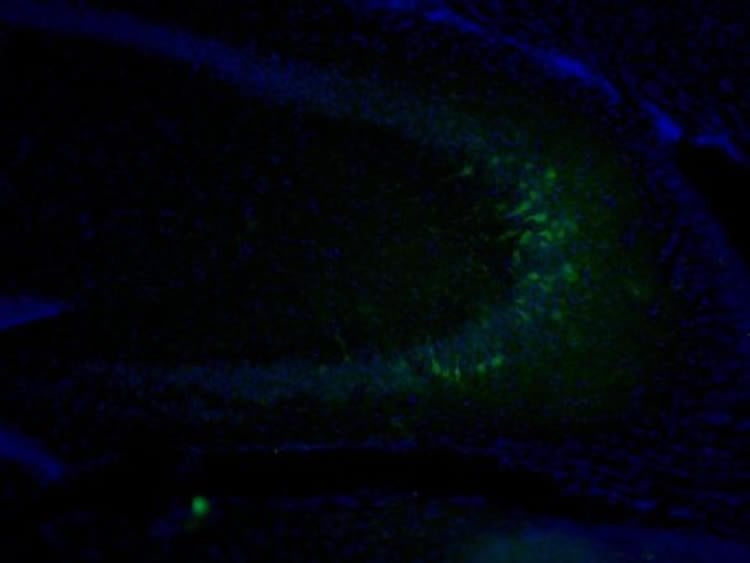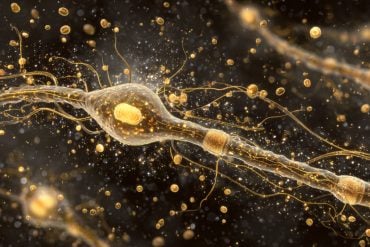Summary: Researchers report maternal behavior can change the DNA of her offspring. The findings, researchers say, could lead to better understanding of some neuropsychiatric disorders.
Source: Salk Institute.
In the perennial question of nature versus nurture, a new study suggests an intriguing connection between the two. Salk Institute scientists report in the journal Science that the type of mothering a female mouse provides her pups actually changes their DNA. The work lends support to studies about how childhood environments affect brain development in humans and could provide insights into neuropsychiatric disorders such as depression and schizophrenia.
“We are taught that our DNA is something stable and unchanging which makes us who we are, but in reality it’s much more dynamic,” says Rusty Gage, a professor in Salk’s Laboratory of Genetics. “It turns out there are genes in your cells that are capable of copying themselves and moving around, which means that, in some ways, your DNA does change.”
For at least a decade, scientists have known that most cells in the mammalian brain undergo changes to their DNA that make each neuron, for example, slightly different from its neighbor. Some of these changes are caused by “jumping” genes—officially known as long interspersed nuclear elements (LINEs)—that move from one spot in the genome to another. In 2005, the Gage lab discovered that a jumping gene called L1, which was already known to copy and paste itself into new places in the genome, could jump in developing neuronal brain cells.
The team had hypothesized that such changes create potentially helpful diversity among brain cells, fine-tuning function, but might also contribute to neuropsychiatric conditions.
“While we’ve known for a while that cells can acquire changes to their DNA, it’s been speculated that maybe it’s not a random process,” says Tracy Bedrosian, a former Salk research associate and first author of the study. “Maybe there are factors in the brain or in the environment that cause changes to happen more or less frequently.”
To find out, Gage, Bedrosian and colleagues began by observing natural variations in maternal care between mice and their offspring. They then looked at DNA from the offspring’s hippocampus, which is involved in emotion, memory and some involuntary functions. The team discovered a correlation between maternal care and L1 copy number: mice with attentive mothers had fewer copies of the jumping gene L1, and those with neglectful mothers had more L1 copies, and thus more genetic diversity in their brains.

To make sure the difference wasn’t a coincidence, the team conducted a number of control experiments, including checking the DNA of both parents of each litter to make sure the offspring didn’t just inherit their numbers of L1s from a parent, as well as verifying that the extra DNA was actually genomic DNA and not stray genetic material from outside the cell nucleus. Lastly, they cross-fostered offspring, so that mice born to neglectful mothers were raised by attentive ones, and vice versa. Initial results of the correlation between L1 numbers and mothering style held: mice born to neglectful mothers but raised by attentive ones had fewer copies of L1 than mice born to attentive mothers but raised by neglectful ones.
The researchers hypothesized that offspring whose mothers were neglectful were more stressed and that somehow this was causing genes to copy and move around more frequently. Interestingly, there was no similar correlation between maternal care and the numbers of other known jumping genes, which suggested a unique role for L1. So, next, the team looked at methylation—the pattern of chemical marks on DNA that signals whether genes should or should not be copied and that can be influenced by environmental factors. In this case, methylation of the other known jumping genes was consistent for all offspring. But it was a different story with L1: mice with neglectful mothers had noticeably fewer methylated L1 genes than those with attentive mothers, suggesting that methylation is the mechanism responsible for the mobility of the L1 gene.
“This finding agrees with studies of childhood neglect that also show altered patterns of DNA methylation for other genes,” says Gage, who holds the Vi and John Adler Chair for Research on Age-Related Neurodegenerative Diseases. “That’s a hopeful thing, because once you understand a mechanism, you can begin to develop strategies for intervention”
The researchers emphasize that at this point it’s unclear whether there are functional consequences of increased L1 elements. Future work will examine whether the mice’s performance on cognitive tests, such as remembering which path in a maze leads to a treat, can be correlated with the number of L1 genes.
Other authors included Carolina Quayle and Nicole Novaresi of Salk.
Funding: The work was funded by the National Institutes of Health (R01 MH095741, U01 MH106882 and F32 MH102983), the G. Harold and Leila Y. Mathers Charitable Foundation, the Leona M. and Harry B. Helmsley Charitable Trust grant #2012-PG-MED00, the Engman Foundation, the JPB Foundation, Annette C. Merle-Smith, and a NARSAD Young Investigator Award.
Source: Salk Institute
Publisher: Organized by NeuroscienceNews.com.
Image Source: NeuroscienceNews.com image is credited to Salk Institute.
Video Source: Video credited to Salk Institute.
Original Research: Abstract for”Early life experience drives structural variation of neural genomes in mice” by Tracy A. Bedrosian, Carolina Quayle, Nicole Novaresi, and Fred. H. Gage in Science. Published online March 23 3018.
doi:10.1126/science.aah3378
[cbtabs][cbtab title=”MLA”]Salk Institute “Early Life Experiences Influence DNA in the Adult Brain.” NeuroscienceNews. NeuroscienceNews, 23 March 2018.
<https://neurosciencenews.com/epigenetics-adult-brain-8678/>.[/cbtab][cbtab title=”APA”]Salk Institute (2018, March 23). Early Life Experiences Influence DNA in the Adult Brain. NeuroscienceNews. Retrieved March 23, 2018 from https://neurosciencenews.com/epigenetics-adult-brain-8678/[/cbtab][cbtab title=”Chicago”]Salk Institute “Early Life Experiences Influence DNA in the Adult Brain.” https://neurosciencenews.com/epigenetics-adult-brain-8678/ (accessed March 23, 2018).[/cbtab][/cbtabs]
Abstract
Early life experience drives structural variation of neural genomes in mice
The brain is a genomic mosaic owing to somatic mutations that arise throughout development. Mobile genetic elements, including retrotransposons, are one source of somatic mosaicism in the brain. Retrotransposition may represent a form of plasticity in response to experience. Here, we use droplet digital polymerase chain reaction to show that natural variations in maternal care mediate the mobilization of long interspersed nuclear element–1 (LINE-1 or L1) retrotransposons in the hippocampus of the mouse brain. Increasing the amount of maternal care blocks the accumulation of L1. Maternal care also alters DNA methylation at YY1 binding sites implicated in L1 activation and affects expression of the de novo methyltransferase DNMT3a. Our observations indicate that early life experience drives somatic variation in the genome via L1 retrotransposons.







